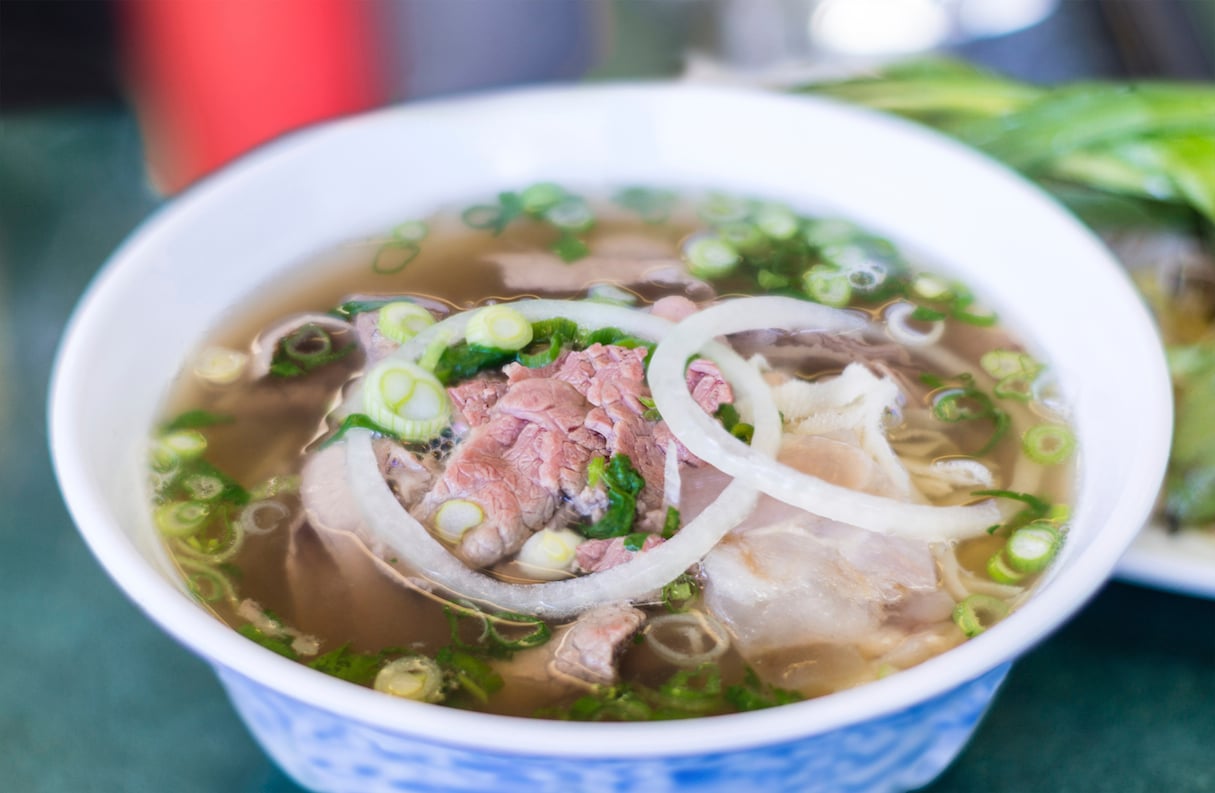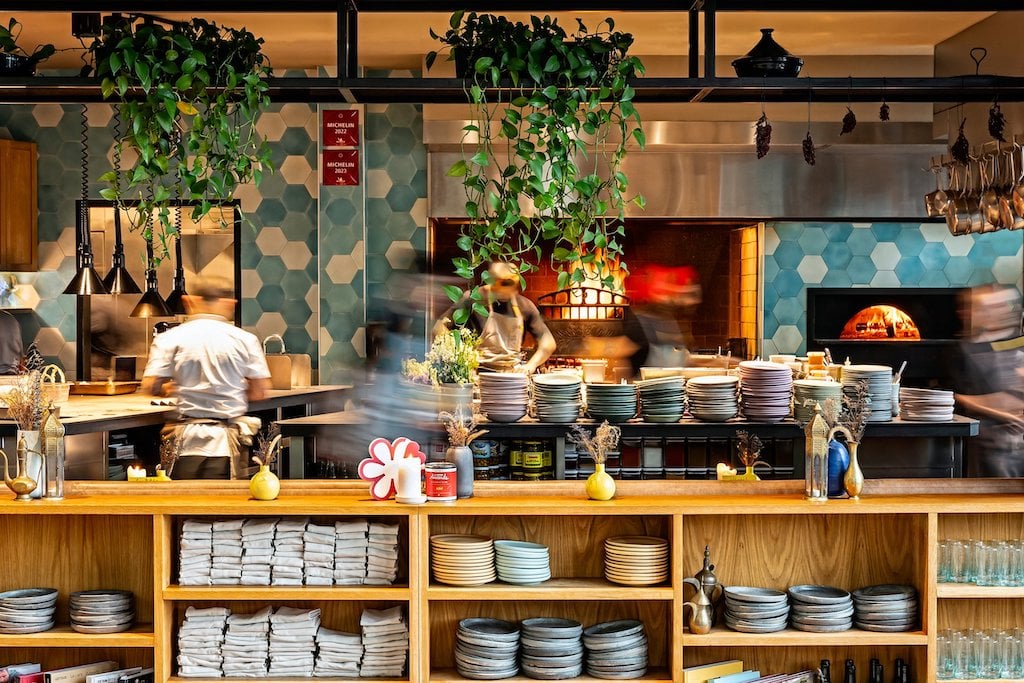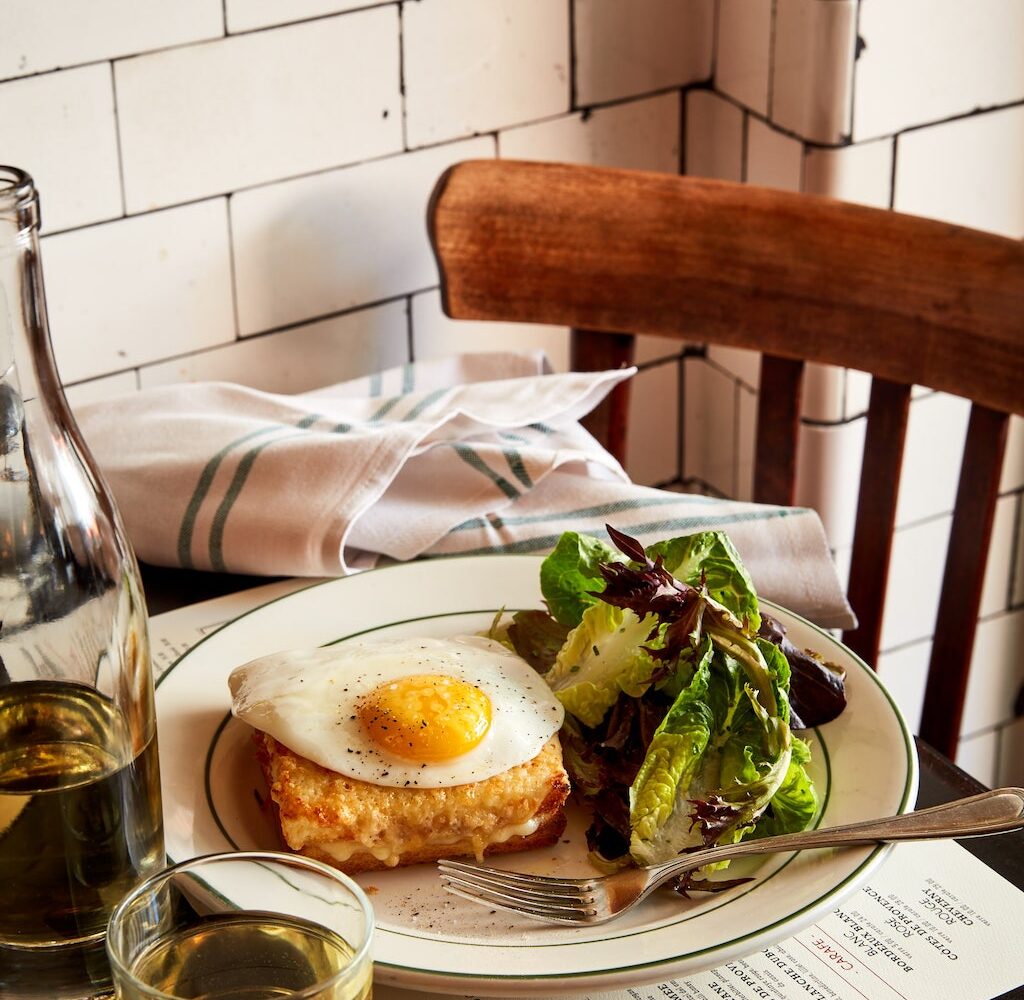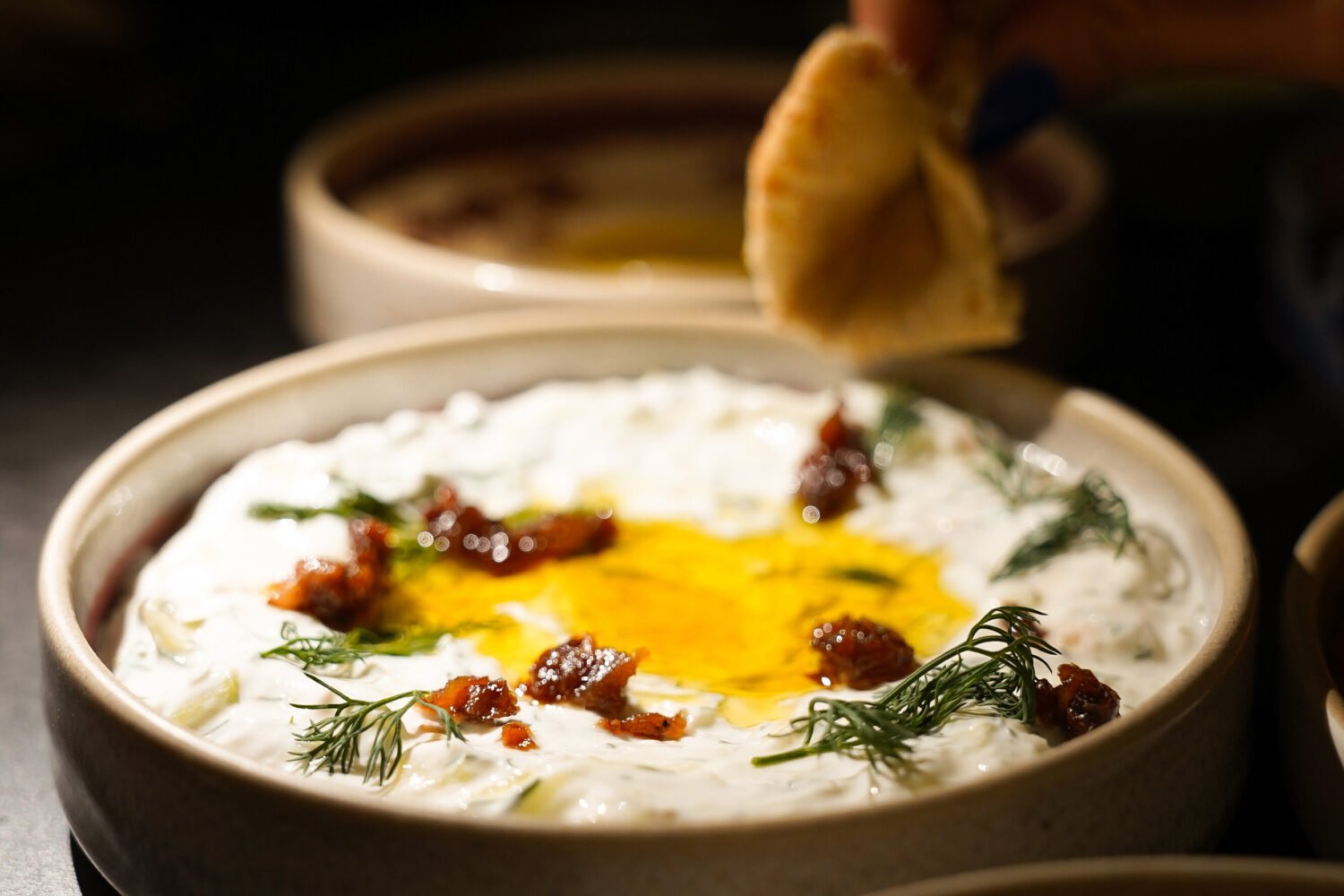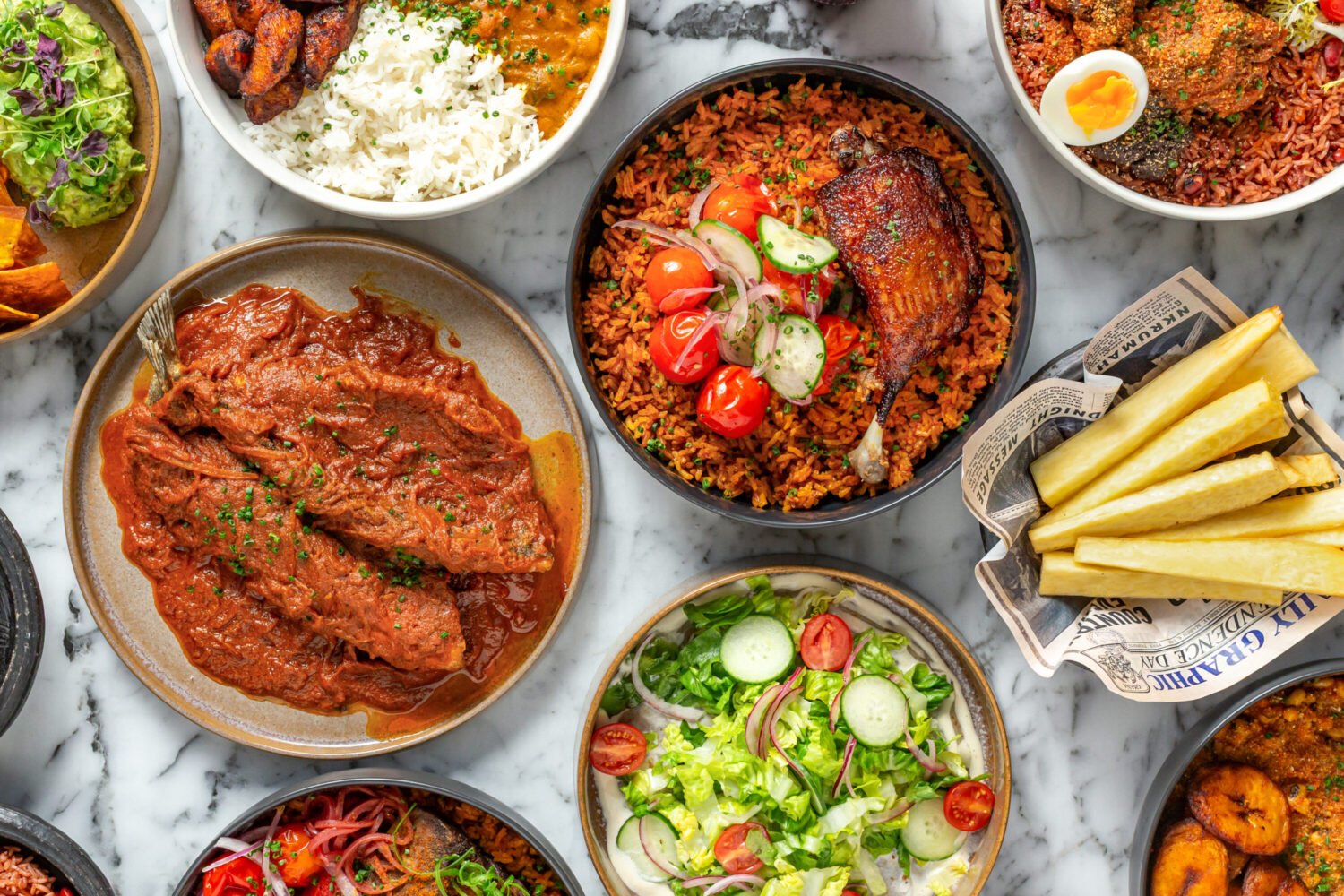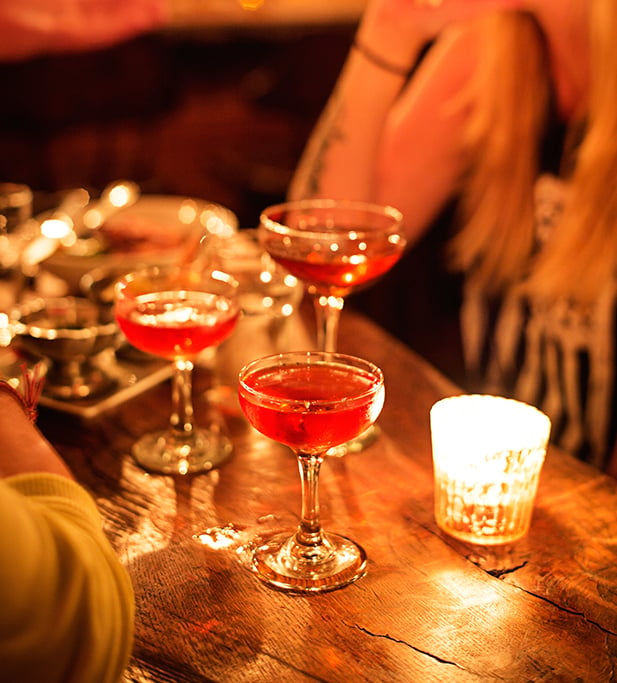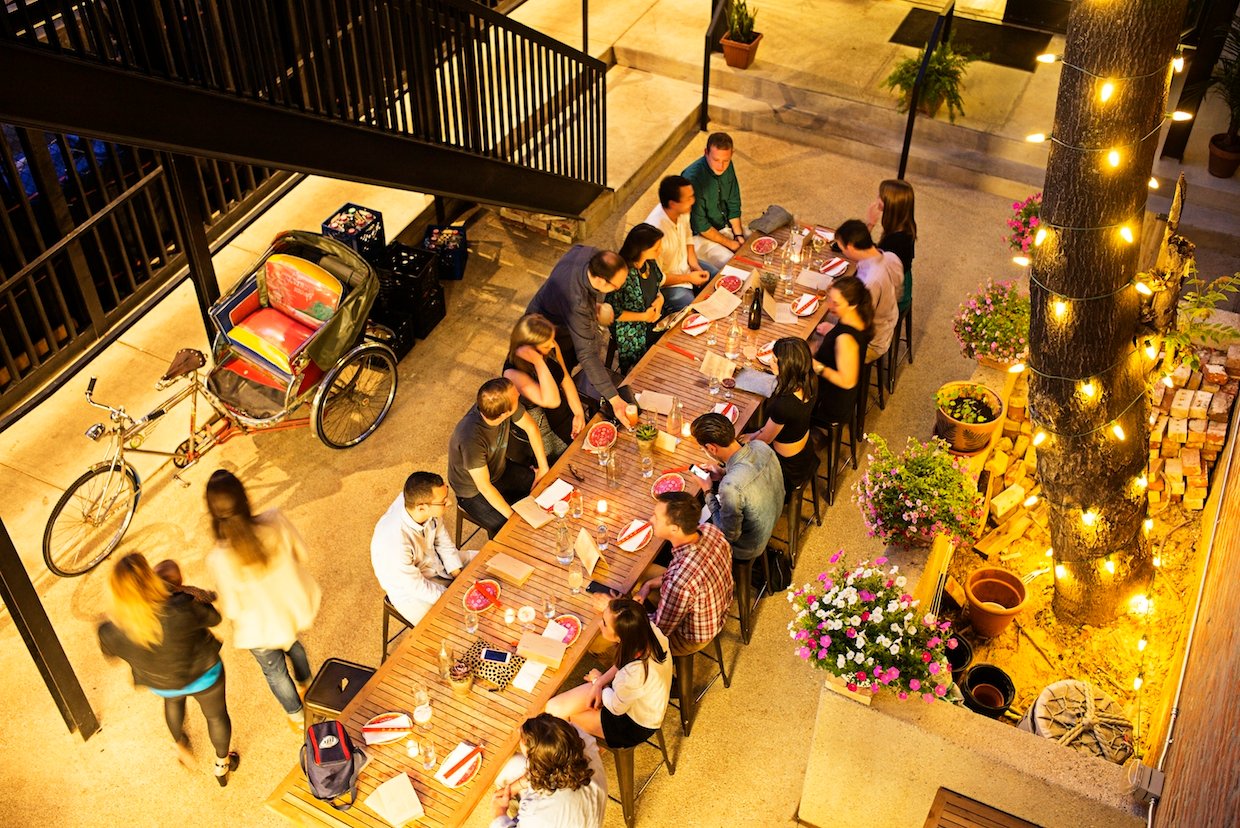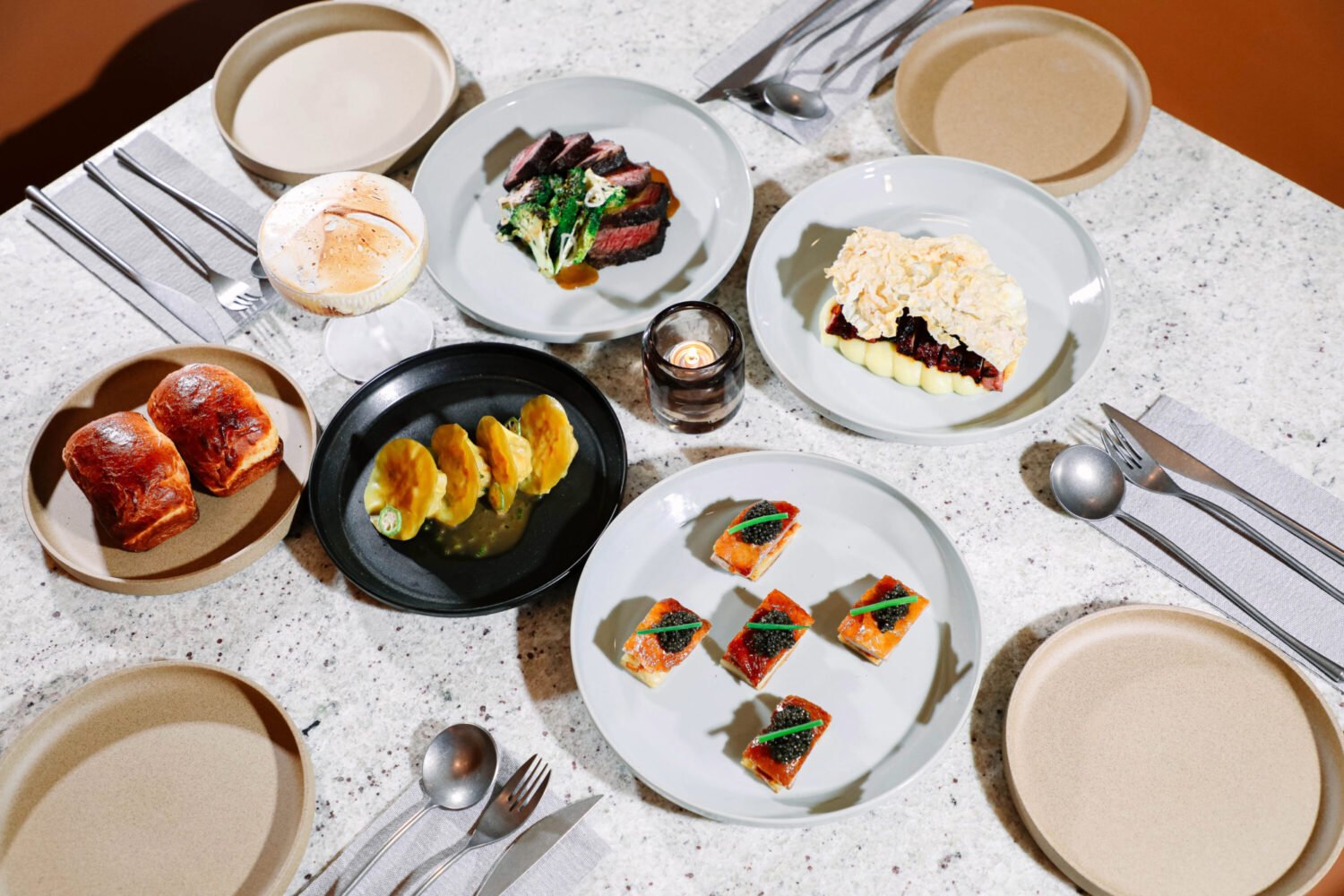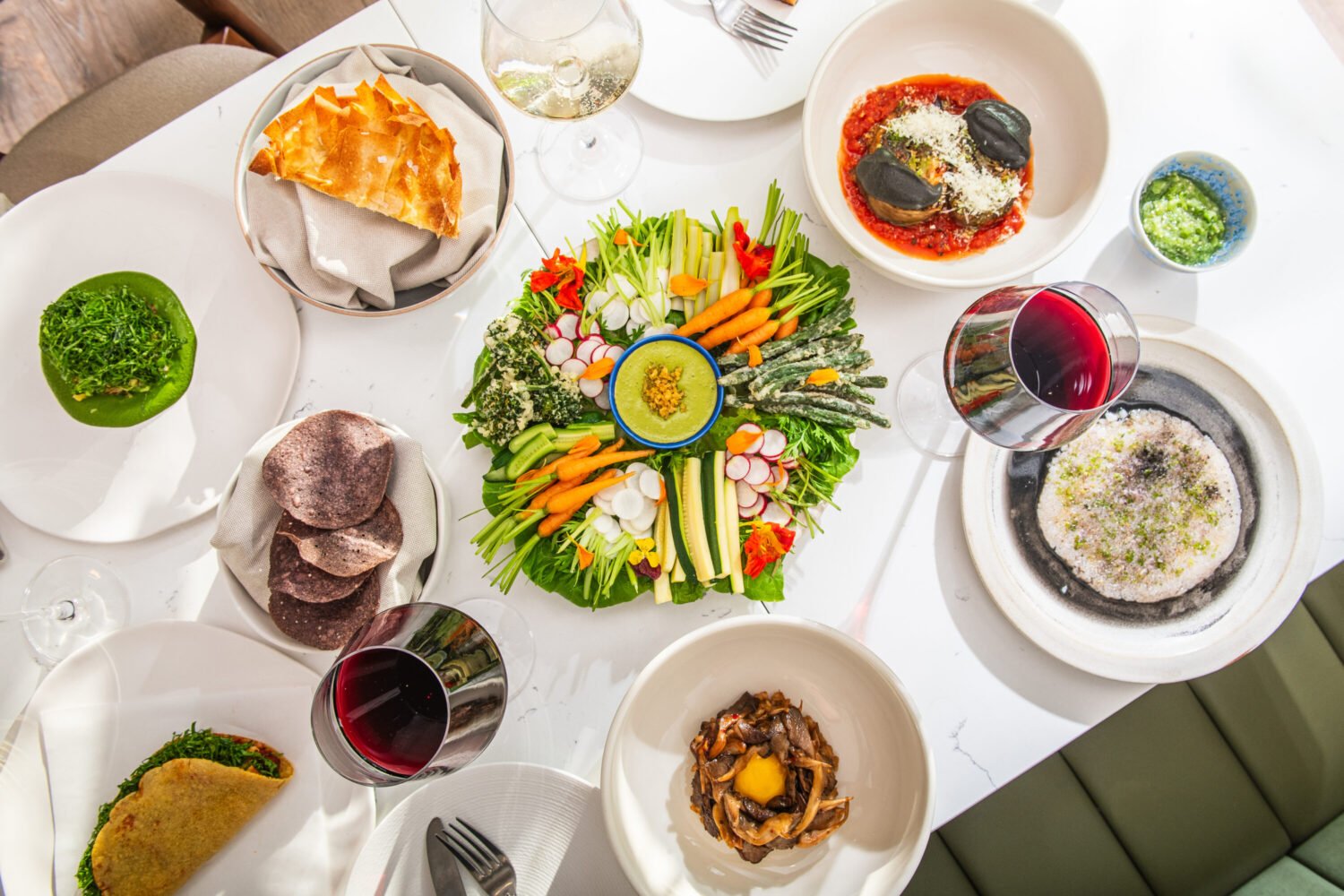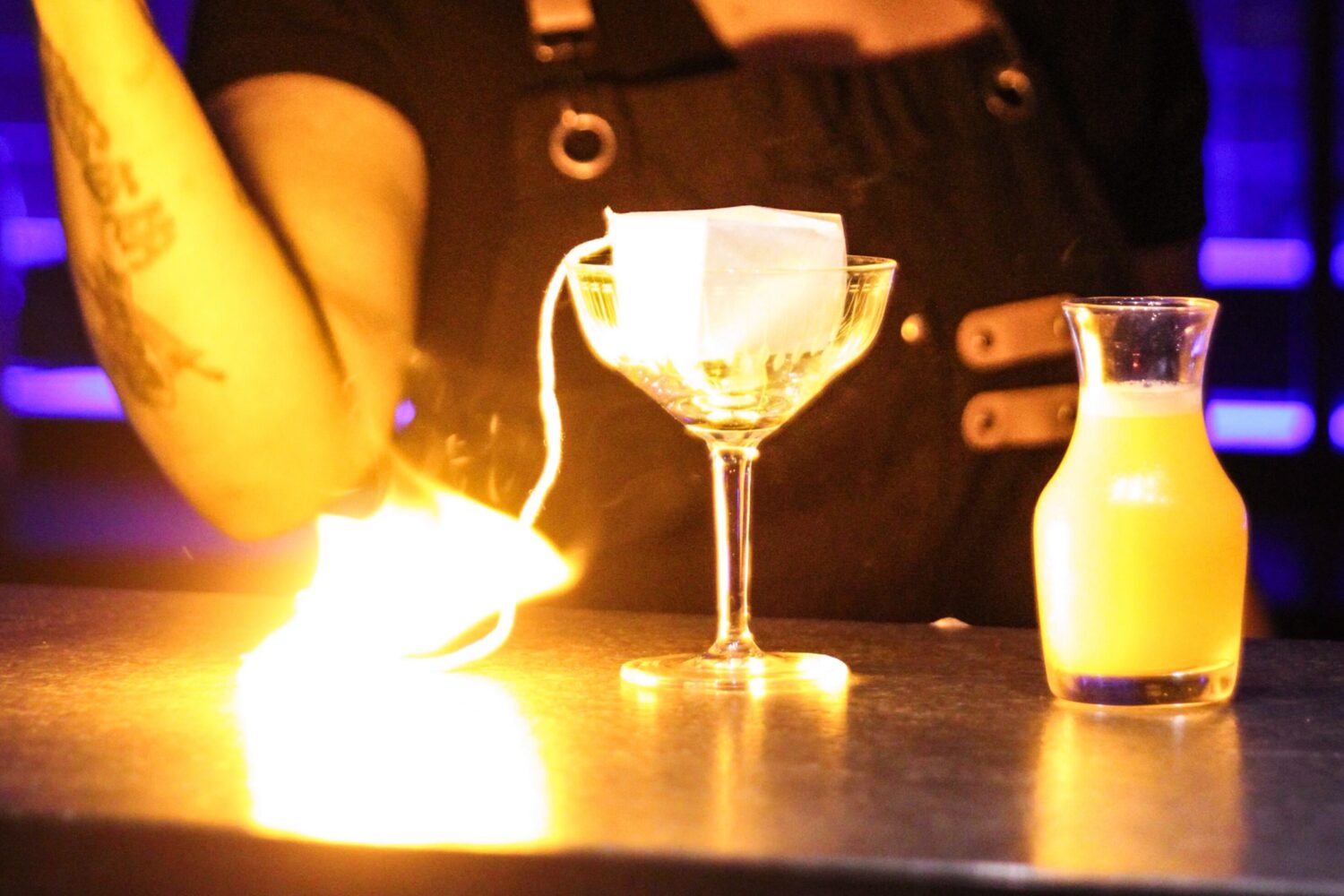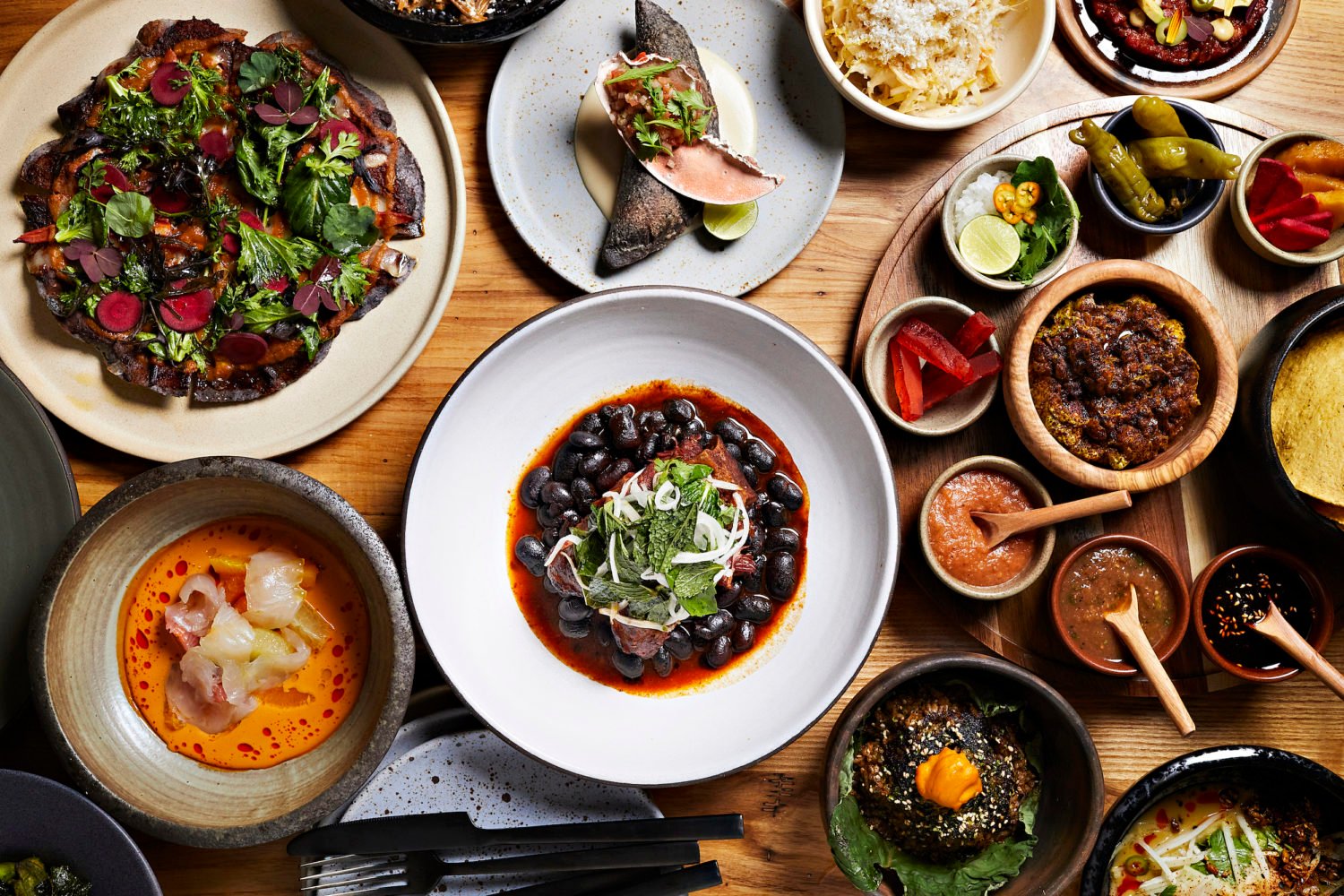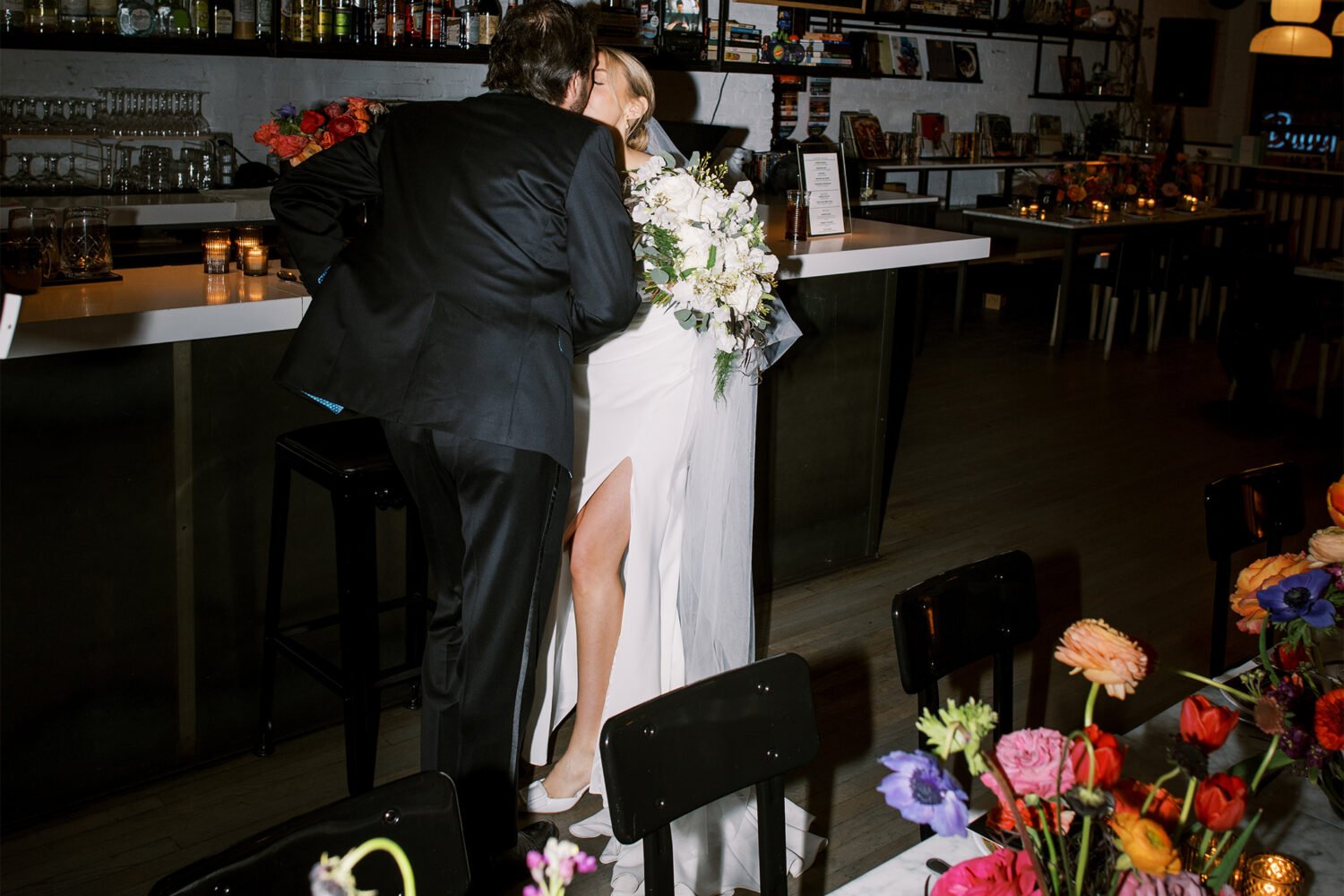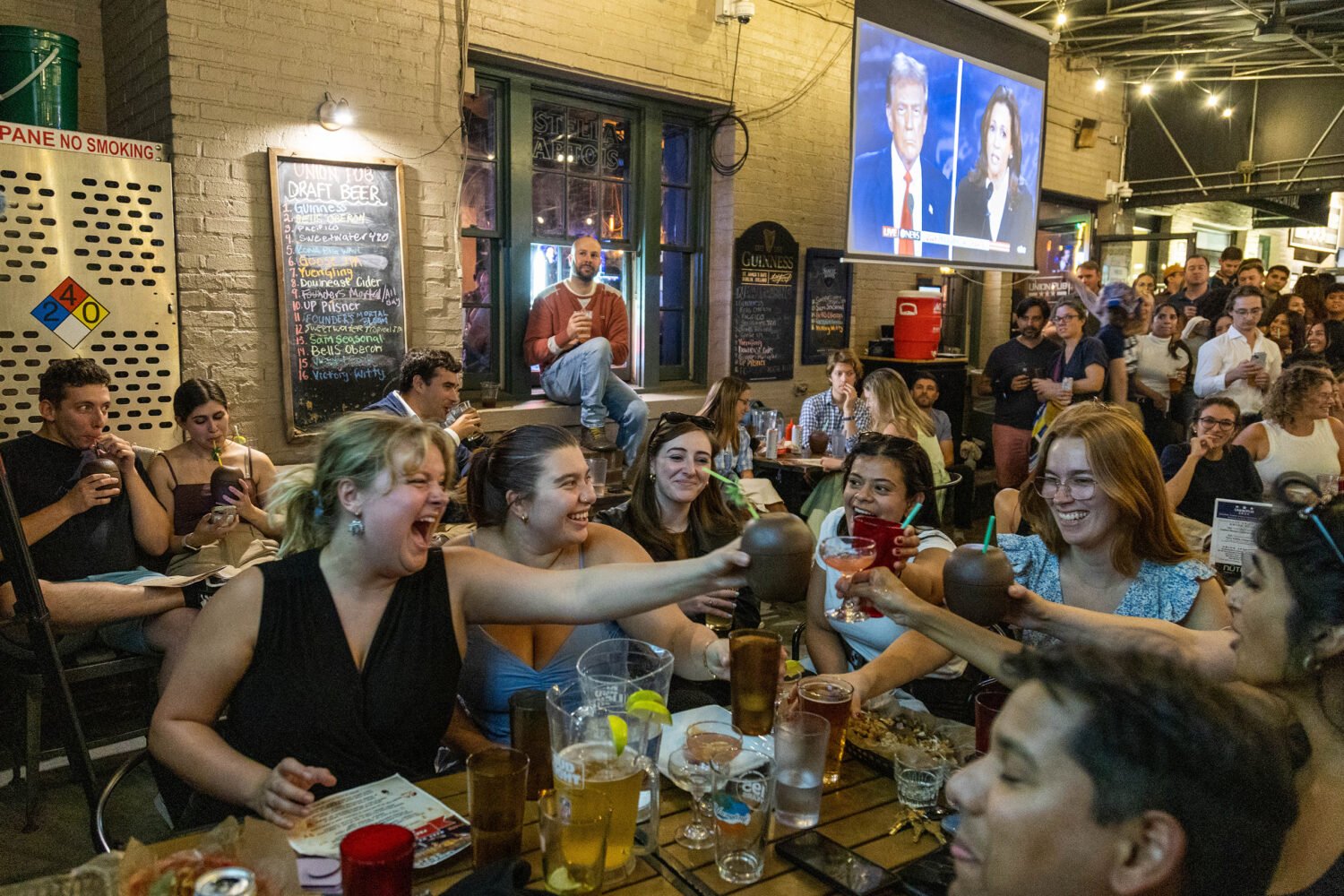First in an occasional series in which I answer one of your burning questions about the world of food and drink.
Hey, Todd, so settle a debate for us slackers who aren’t working enough today: Why do so many pho restaurants have numbers after their names? Is that a thing? And, if so, why? Thanks!!
— Kate, Washington, DC
So slacker Kate, I went and did a little investigating. The answer is interesting–more interesting than I had thought before I’d gone looking.
The DC area, as you’ve keenly noticed, is loaded with pho parlors with numbers in their names, Pho 75 being the oldest and largest (5 locations). But you also have Pho 14, Pho 301, Pho 88, Pho 50, Pho 24, Pho 495, Pho Number 1, etc.
Initially, the number was meant to be “an historical marker,” according to Andrea Nguyen, an author of 5 books on Vietnamese cooking; her sixth, to be published by Ten Speed Press in 2017, is titled The Pho Cookbook.
Take Pho 75, for instance, whose number commemorates 1975–the year of the fall of Saigon and the end of the Vietnam War. On the West Coast, the popular Pho 54 restaurant chain pays honor to 1954–the year the country was split into north and south, according to the terms of the Geneva Convention.
Not every pho parlor seeks to connect itself to history, although, curiously, many choose to honor the numbering convention nonetheless.
Many employ what Nguyen calls “location mnemonics”–a trait carried over from Vietnam, says Nguyen, where cafes and shops invoke street names to help customers find them.
To wit: Pho 50, in Falls Church, is on Rte. 50. Pho 495, in Springfield, is near the Beltway. Pho 301 is in Maryland, in Takoma Park (area code 301).
One of the best pho parlors in the area, Pho 88, in Beltsville, neither gestures toward a historic milestone nor attempts to situate the customer geographically. So why does it incorporate a number?
The original owner, a Taiwanese businessman named Alan Tan, chose 88 when he opened the restaurant, in 2004, because the number is symbolic, in Asian cultures, of long life — double infinity. (Incidentally, you’re highly unlikely to come across a restaurant called Pho 4; 4, in Asian cultures, is akin to 13 in ours: a number to be feared.)
So there you have it, Kate.
But before I let you go–your question got me thinking about all that we who love pho but didn’t grow up eating it don’t know about this wondrous and restorative dish.
So I decided to delve a little deeper and answer all the questions you didn’t ask but might have…
Like gumbo or barbecue or chowder, pho is a regional dish that inspires fierce and unending debate–or, why northern Vietnamese think southern Vietnamese are idiots
Pho originated in Hanoi, in the north, and northerners are fiercely proprietary about the dish–how it is to be prepared, how it is to be eaten. I spoke with several pho experts, and was struck by how closely the battles over pho correspond to those of, say, gumbo, or barbecue.
In 1954, with the partitioning of Vietnam into two nations, great numbers of Vietnamese migrated from north to south. Among other things they brought with him, they brought their pho culture. Southerners took to the magical meal-in-a-bowl, but not quite as the northerners would have preferred. The two cultures have been feuding ever since.
Northern pho is delicate and elegant, the broth more savory than sweet. It is not eaten with basil or bean sprouts or other herbs. Plainness is a virtue. The broth is the thing.
The south evolved its own style, one rooted in its very different cooking traditions. Dishes in the south are generally sweeter than those of the north, and so the broth, too, is sweeter (all pho is seasoned with a little bit of sugar; in southern-style pho, the sugar is applied with a heavier hand). Austerity, elegance, simplicity–traits so prized in the north–find little traction in the south. Southerners love their accoutrements: basil, bean sprouts, sawtooth herb, a squeeze of lime, a shot of hoisin, a splash of Sriracha.
This embellishment–or over-embellishment, in the minds of many northerners–constitutes an offense against pho. If you eat enough pho, eventually you will come across a diner who prevails upon his server to not even bring him the heaping dish of condiments.
Nguyen recently returned from three weeks in Vietnam, and nearly everyone she spoke with had an opinion about pho. Northerners were, not surprisingly, fiercely territorial about the dish. “Ours,” they told her, over and over again, “is much better. They fuss things up too much in the south.”
The author is not unfamiliar with those arguments. Her northern-born parents may have migrated south, in ’54, but they stood clear of the culture of embellishment. Growing up, Nguyen says, “we were never allowed bean sprouts or Thai basil or lime wedges. It was like: this is what you get.” Later, in college, she discovered southern-style pho, and began … experimenting. Her mother was appalled when one day she saw her daughter customizing a bowl with herbs–or, rather, “ruining” a perfectly good bowl of soup.
What you’re eating is, in a manner of speaking, a hybrid dish
Given that nearly every bowl of pho that’s available to us is accompanied by heaping portions of basil, bean sprouts, and lime wedges, are we right to assume that what we are eating is southern-style pho?
Not exactly.
According to Dung Phan, the general manager for all locations of Pho 75: “There is only one type of pho. One broth. And that comes from the north. It’s like hot dogs. If you go to New York or Texas, it’s the same hot dog.”
Although it’s true that most of the Vietnamese immigrants who immigrated to the US came from the south, my experts told me that it would be more precise to say that what we are eating is northern-style pho served in a southern-style way.
In other words, the broth is more savory than sweet in most cases, and bowls are accompanied by heaping plates of vibrant-looking herbs and other adornments.
In other words: the dish we’re eating is neither entirely northern nor entirely southern but both, simultaneously–a hybrid of a dish that accomplishes something the country itself required a long, protracted war and hundreds of thousands of casualties to achieve.
The best pho is not necessarily in Vietnam
You might think that you would need to travel to Vietnam to get the best pho, but this is not, alas, the view of the experts.
“The pho is better here,” says Le Lai, one of the four sisters of Four Sisters restaurant in Merrifield, “and that’s not just me saying that, but most people who travel back to our country.”
Where Vietnam is superior is in its noodle-making. Rice noodles are made daily, and this makes them more fresh and supple than those we eat in our pho in the U.S.
But the broth, the experts say, is better here than there because meat is more widely available, and that meat is also of a higher quality. More and better meat in the broth, says Lai, means a more substantial, fuller-bodied soup.
“You want a soup,” Nguyen adds, “where the fat lingers on your lips.”
Lacking that depth and richness, Le says, many pho parlors in Vietnam “put more MSG in.”
Nor is it just the meat that’s better in this country. “The sugar here is better, too,” Le says.
In recent years, DC-area pho parlors, like Four Sisters, have begun to close the noodle gap, sourcing a brand of rice noodles that little resembles the product most places had been using for three decades. This noodle is not fresh, as is common throughout Vietnam, but it also is not the dry spaghetti-like noodle that had been the norm. Its softer, pre-cooked texture obviates the need for reconstituting in warm water before cooking.
If you’re tasting star anise, you’re tasting a bad bowl of pho
Talk to some pho fanatics, and they will tell you–invoking the tasting-note language of wine appreciation–that what they love most in a broth are the hits of star anise and cinnamon.
Acccording to the experts, they most likely have been weaned on bad pho.
“I hear from people all the time: Oh, you’re writing a book on pho? I hate star anise. Well, then, I’m sorry, but you haven’t eaten good pho.”
Nguyen says that great pho is like an expertly made cocktail, harmoniously balancing its various elements. As it turns out, the author doesn’t even list star anise and cinnamon as “foundational.”
“Good pho doesn’t hit you over the head with spice,” she says. “That’s not the way pho is supposed to be. The spices are layered into the broth. If you put too much in, it overwhelms the flavor.” The ideal is a “delicate elegance.”
After oxtails or leg of beef, whose fat and juice is leached out slowly over the course of eight hours in a large stock pot filled with water, the most important ingredients, she says, are burnt onion and grilled ginger.
If you didn’t know that burnt onion was a vital component in the dish, you’re not alone: I had no idea, either.
Nguyen says that charring the onion and grilling the ginger gives the broth both flavor and fragrance. You may not taste them, but you would definitely know that something was missing without them: The broth would not have nearly the depth that it does. Star anise and cinnamon are more discernible, but that just means that they must not be overused.
The surest way to ruin a good bowl of pho
Never add a handful of beansprouts before tasting, the experts say.
Why?
The sprouts are cold, and the temperature of the soup will drop precipitously.
The surest way to improve an okay bowl of pho
Order the richest, fattiest cuts of meat–tendon, fatty brisket, and the like–and request that the kitchen layer them in the bowl raw, not cooked.
You may not want to eat these cuts; they may be too fatty for you. But the resultant broth will be measurably more full-bodied as a result.
If both your hands aren’t occupied, you’re doing it wrong
Have you ever watched a Vietnamese diner eat a bowl of pho?
You will never see an empty hand. In one, a spoon; in the other, chopsticks. The alternation of hands continues until the bowl is done.
The long-suspected dirty secret of pho parlors, or why some bowls taste like dishwater
Is it true that many pho parlors water down the broth throughout the day?
“They may,” says Nguyen, who, though she has heard the rumors herself (and sampled more than a few broths that taste like “dishwater”) has not been able to confirm the truth of that claim.
“There have been rumors,” she adds, “that some pho shops get their pho broth from a distributor, and then they just kind of doctor it up. I mean, it that’s true, and who knows, but if it is, that’s just wrong. You know, take your time and do it right. It’s such a beautiful dish.”

